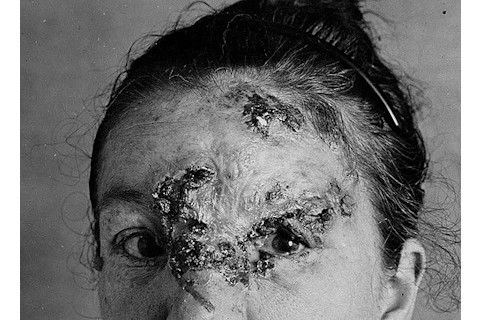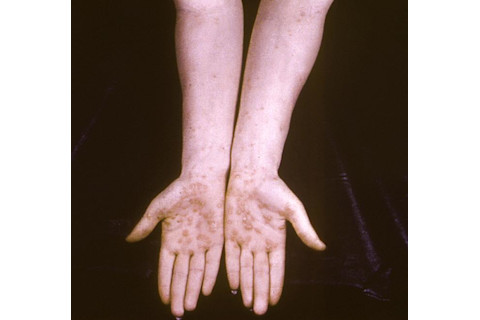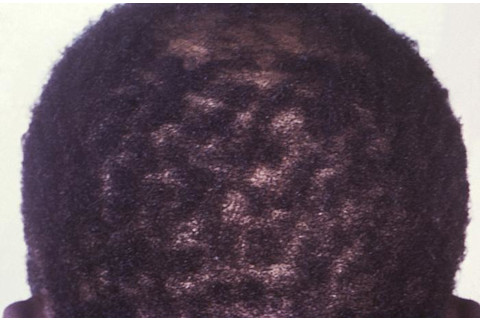There’s nothing quite like syphilis. The sexually transmitted bug that sullied Christopher Columbus’ journey either to the New World or his return back to the Old – we’re still debating this grand chicken-or-egg epidemiological mystery – has deranged the minds of dictators and kings, was once a leading cause of committed hospitalizations to the psych ward, and even sparked fashion trends among members of the European royal courts who sought to cloak its debilitating, tell-tale symptoms (1).
Beyond its rich history as an influence on high society and fashion, syphilis is renowned among physicians as the great con artist of medicine, a sneaky shape-shifter that rarely follows the rulebook, mimicking other ailments and confounding doctors in their search for a diagnosis. As a copycat disease, the “great pretender,” the diagnosis of syphilis relies on a true mastery of all that ails the human body. With this in mind, one of the founding fathers of modern medicine, Sir William Osler, wrote that “he who knows syphilis knows medicine.”

A woman suffering from tertiary syphilis, with erosive lesions of skin and mucous membranes. Image: Dr. John A Fordyce. Click for source.
A woman suffering from tertiary syphilis, with erosive lesions of skin and mucous membranes. Image: Dr. John A Fordyce. Click for source.
Syphilis can make you go bald. Syphilis can make you go mad. Syphilis can appear as an out-of-the-blue psychosis in your previously unflappable grandpa (1). It can show up as a severe heart murmur, eroding the lining of the aorta and causing a deadly, massive backflow of blood back into the heart (2). It can manifest itself as a stroke that renders a patient half paralyzed and incapable of speech; as oozing tumors on the scalp and genitals; as erosive lesions of the eyes, skin, bones, and nervous system (3)(4). Sometimes it seems it would be more productive to ask what syphilis doesn’t do rather than what it does.
Syphilis is sexually transmitted by direct skin-to-skin contact with a sore known as a chancre, which transmits a coil of a bug resembling a corkscrew, a type of bacteria known as Treponema pallidum. There are four occasionally overlapping stages of the infection: primary, secondary, latent, and late or tertiary. In the primary stage, a painless ulcer at the site of infection appears and lingers for 3 to 6 weeks. It is this ulcer or chancre that is highly contagious, and it may appear on the mouth, genitals, or anus.
Untreated, the chancre can disappear and be succeeded a month later by the secondary stage, in which a subtle symmetrical red rash blossoms over the torso, genitals, and, quite uniquely, on the palms and soles (5). In some people, the outer eyebrows disappear. In others, hair loss results in what has been described as a “moth-eaten” scalp, as if gnawed away by insects.

A characteristic syphilitic rash on the palms of the hands. Image: CDC / Robert Sumpter.
A characteristic syphilitic rash on the palms of the hands. Image: CDC / Robert Sumpter.
The chronic and far more destructive tertiary stage can occur a year or even decades after the initial infection. It can transpire in any organ of the body but typically takes the form of ulcerative lesions of the skin and mucous membranes and the vascular and neurological systems. It is this phase that confounds physicians in its resemblance to several other types of diseases, including cancer, autoimmune disorders, vascular disease processes, or perhaps another infectious bug altogether.
In fact, it is due to these vague symptoms of syphilis and its ability to affect nearly any organ system in the human body that so many historical figures have been retroactively diagnosed with syphilis. Syphilis has been attributed by modern academics to the megalomania and violence of dictators and thugs and, equally, to the narcissism and creativity of artists and writers.
The STD has been attributed to the erratic and brutal reign of Idi Amin, Uganda’s dictator in the 1970s, who famously declared himself the King of Scotland, as well as the “Lord of All the Beasts of the Earth and Fishes of the Seas and Conqueror of the British Empire in Africa in General and Uganda in Particular.” The “despot, buffoon, and killer” died exiled in Saudi Arabia from multi-organ failure resulting from latent syphilis (6).

A "moth-eaten" alopecia, as is sometimes seen in the second stage of syphilis. Image: CDC/ Robert Sumpter.
A “moth-eaten” alopecia, as is sometimes seen in the second stage of syphilis. Image: CDC/ Robert Sumpter.
Lenin, too, suffered from manic rage and erratic behavior, and died in his early fifties confined to a wheelchair after multiple strokes left him mute and paralyzed. The famed Russian scientist Ivan Pavlov – yes, of salivating dog fame! – wrote that “the revolution was made by a madman with syphilis of the brain”(7). Other despots also accused of infection with syphilis include Napoleon Bonaparte, Henry VIII, and Al Capone.
Even the most prosaic of ailments, from a red rash to a heart murmur, can still reveal surprises to the practicing clinician, and there is truly no greater surprise than a syphilis infection. This STD is the chameleon of medicine, a bacteria that camouflages and confounds through mimicry, not content with one bodily organ, one form of pathology, or even the New World or Old World (whichever that may be), and still today a worthy challenge for physicians.
Previously on Body Horrors
The Inheritance of Syphilis – “Edvard Munch’s painting “The Inheritance”… shocked society with its portrait of a mother and child infected with syphilis. It was a frank and unsettling depiction of the taboos of that time, of sex and sexually transmitted diseases, of infidelity and prostitution.”
Pyromania! On Neurosyphilis and Fighting Fire with Fire – “The practice of pyrotherapy, in which malaria infection was intentionally used to treat advanced syphilis, is also one for the books. It is one of the stranger stories populating the history of medicine and includes a Nazi sympathizer, human experimentation and blood-swapping transfusions infused with malaria parasites.”
References
1) JM Stubblebine (1981) Psychiatric symptoms of neurosyphilis. West J Med. 135(4): 340–341
2) S Aman et al. (2011) The great imposter, the great imitator. Br J Cardiol. 18: 94−6
3) S Ahamed et al. (2009) Case of Neurosyphilis Presented as Recurrent Stroke. OMJ. 24: 134-136
4) ES Lee et al. (1990) Tumorous syphilid. Genitourin Med. 66(3): 202–204
5) R Zeltser & AK Kurban. (2004) Syphilis. Clinics in Dermatology. 22: 461–468
6) Ian Johnston (17 Aug, 2003) “Death of a Despot, Buffoon and Killer,” The Scotsman. Accessed online 03/16/16 at http://www.scotsman.com/news/world/death-of-a-despot-buffoon-and-killer-1-1292740
7) Nick Britten (22 Oct, 2009) “Vladimir Lenin died from syphilis, new research claims.” The Telegraph. Accessed online 03/16/16 at http://www.telegraph.co.uk/news/6406447/Vladimir-Lenin-died-from-syphilis-new-research-claims.html













